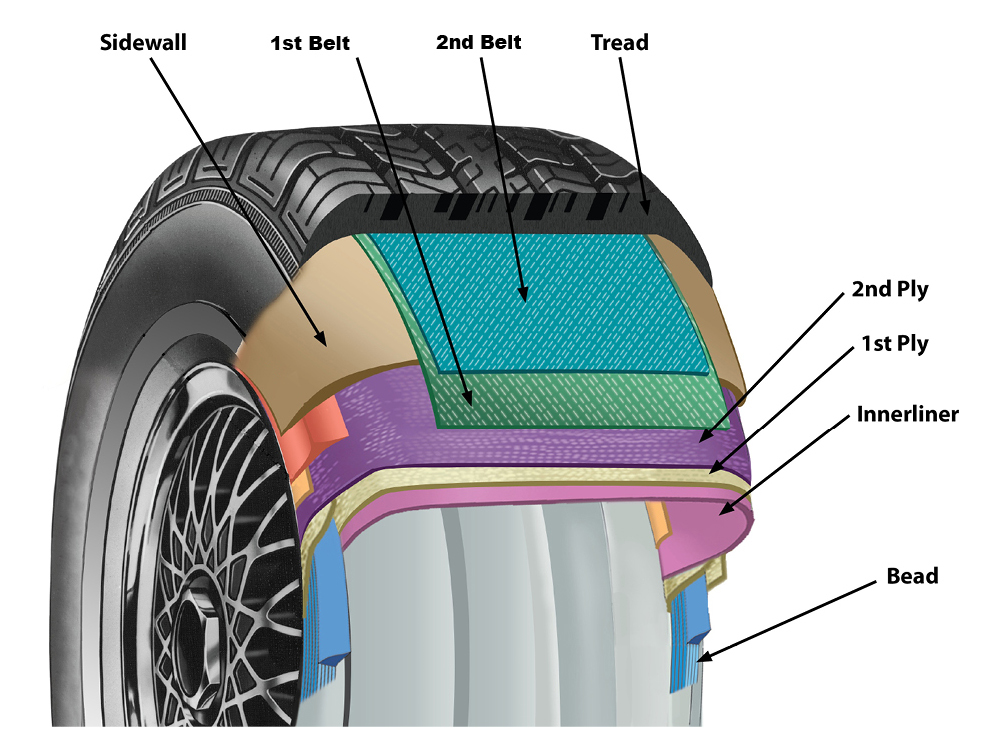From potholes to stray nails and screws, your tires can encounter a lot of hazards on the road. And when they become damaged or go flat, you might be wondering whether you should purchase a new set or get the tire repaired professionally.
Not every flat or punctured tire can be fixed, but there are other instances where you can get the tire — and your entire car — back on the road with a quick repair. Read on to learn what kind of tire damage can be repaired and when you should get a replacement.
Puncture location and severity of damage can often be the deciding factors between getting a tire repaired vs. replaced. If you've got a tire that's been punctured in the tread area and it doesn't measure more than 1/4 of an inch (6mm) in diameter, a simple repair may do the trick.
If the tire has two punctures, getting a tire repaired may still be an option as long as the punctures are at least 16 inches apart and the maximum number of repairs does not exceed a total of 2 in the tire. Any more punctures than that, and you should consider getting a new tire. Punctured tires will likely need to be replaced if:
Durable run-flats, such as Bridgestone DriveGuard tires, can often buy you a little more time in a flat tire situation. But if driven on with less than 15PSI, they may not be repairable. To prevent this issue on run flats and otherwise, avoid driving your vehicle if you have a flat or are low on air.
If you notice a bubble in your tire's sidewall, this has likely been incurred by high-impact damage. Factors like driving on a flat, hitting a pothole or curb the wrong way, riding over speed bumps or railroad crossings too quickly, or overloading your tires can all lead to this issue.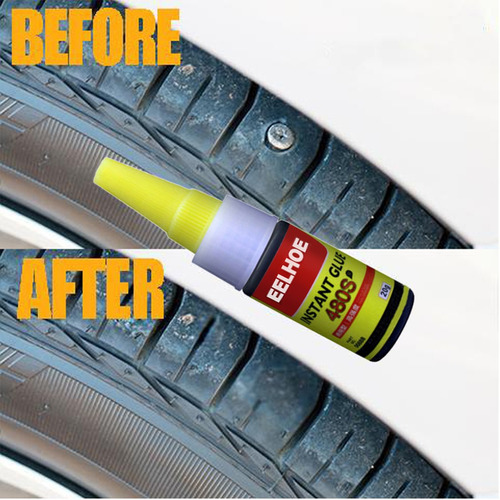 Although this tiny bulge may not seem intimidating, tires with side bubbles are not repairable, and you should have the tire replaced as soon as possible.
Although this tiny bulge may not seem intimidating, tires with side bubbles are not repairable, and you should have the tire replaced as soon as possible.
Repaired tires can often be mended again if the damage doesn't compromise a previously repaired area. For example, if you have a nail-in-tire situation, you may be able to do a quick repair if the puncture location doesn't overlap with a previous tire injury and the repair was done properly. If it does overlap, you will likely need a replacement.
Oftentimes, affected tires will need to be replaced following a major incident. If the tire has sustained serious damage in a crash, such as significant cuts or tread separation, it should be replaced, not repaired.
You might be tempted to do a quick fix when you do have a flat or damaged tire. Here are two that can be used in emergency or short-term situations but shouldn't be considered long-term tire repairs:
These fast fixes are a double-edged sword. They'll help you get your car to a local Firestone Complete Auto Care, but don't count on them to keep you on the road for very long. Tire sealants can freeze in cold weather, damage your tire pressure monitoring system, and prove ineffective at repairing any tire damage that's more serious than a slow leak or small hole. It's also important to note that our technicians will not be able to fix punctures in tires with emergency temporary sealants.
They'll help you get your car to a local Firestone Complete Auto Care, but don't count on them to keep you on the road for very long. Tire sealants can freeze in cold weather, damage your tire pressure monitoring system, and prove ineffective at repairing any tire damage that's more serious than a slow leak or small hole. It's also important to note that our technicians will not be able to fix punctures in tires with emergency temporary sealants.
Again, these are quick fixes that aren't meant to enable long-term use of a punctured or damaged tire. When considering a flat tire patch or replacement, remember that a patch doesn't fill in the hole left by a puncture — while a plug doesn't offer a permanent seal. In short, patching or plugging alone are never adequate long-term solutions. That's why at Firestone, our technicians can use a patch-plug combo to provide an adequate long-term solution for some tire punctures.
To ensure your tire is safely repaired or replaced, it's best to have it inspected and serviced by a trained technician.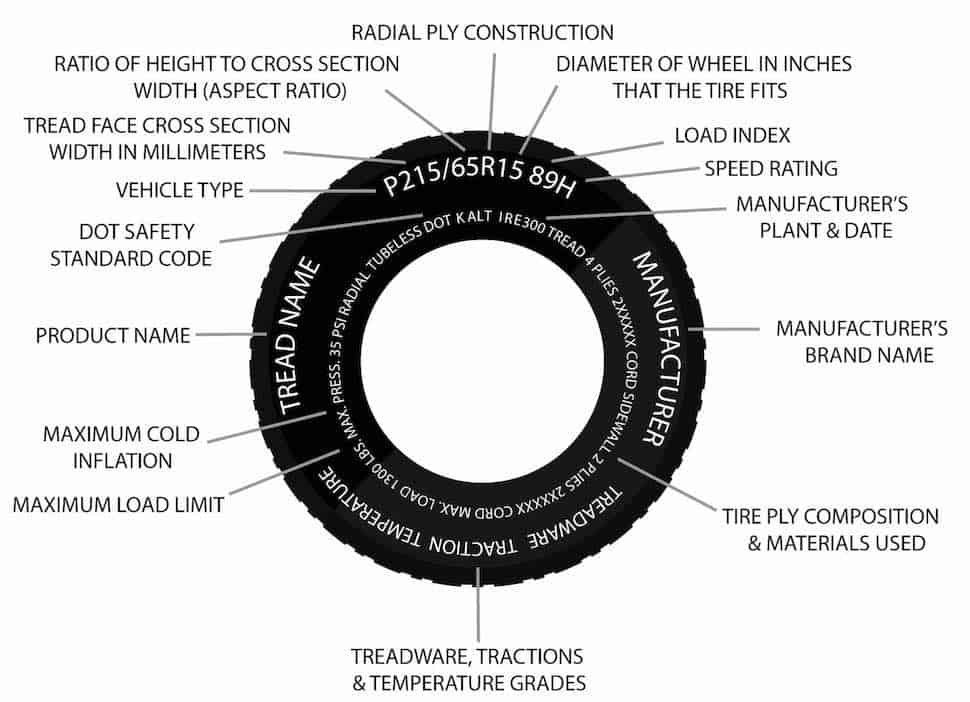 Visit your local Firestone Complete Auto Care and ask about our tire repair services. Your safety is our priority, and we back all of our work with a triple promise that guarantees your repair will be Fixed Right, Priced Right, Right on time.
Visit your local Firestone Complete Auto Care and ask about our tire repair services. Your safety is our priority, and we back all of our work with a triple promise that guarantees your repair will be Fixed Right, Priced Right, Right on time.
Now that you know when to repair vs. replace a car tire, schedule your appointment today!
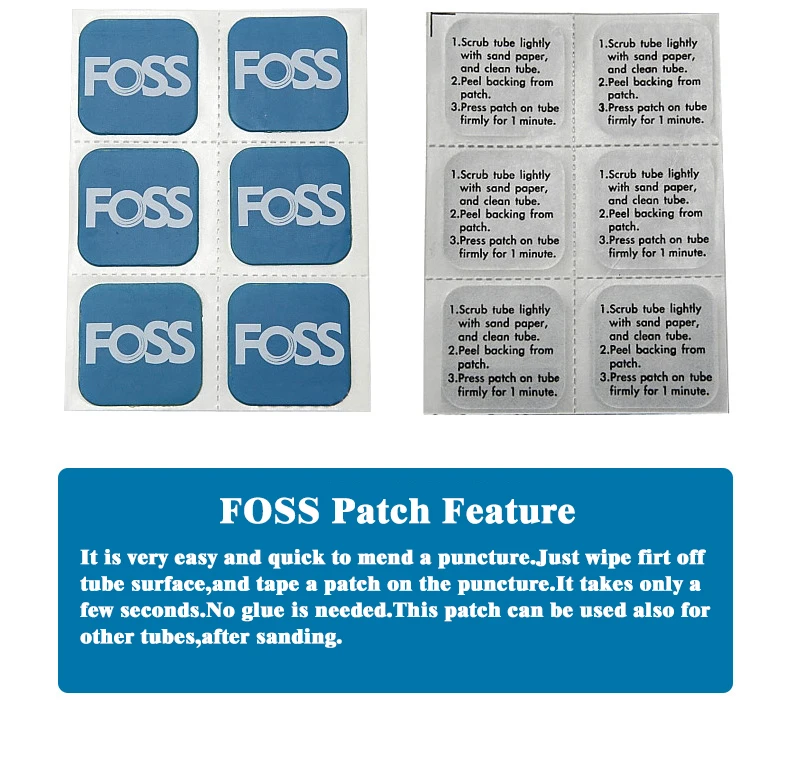
Okay, so you’ve got yourself a puncture in one or more of your tires. It can happen. Tire repair is an option to explore rather than buying a brand-new tire, but drivers should know the full extent of what is legally permissible to have fixed.
The law in most countries has a strict definition as to the classification of repair materials, and the number of repairs permitted on a single tire. Regulations like these are necessary to ensure safety for all road users.
In summary, tire repair work is not permissible when:
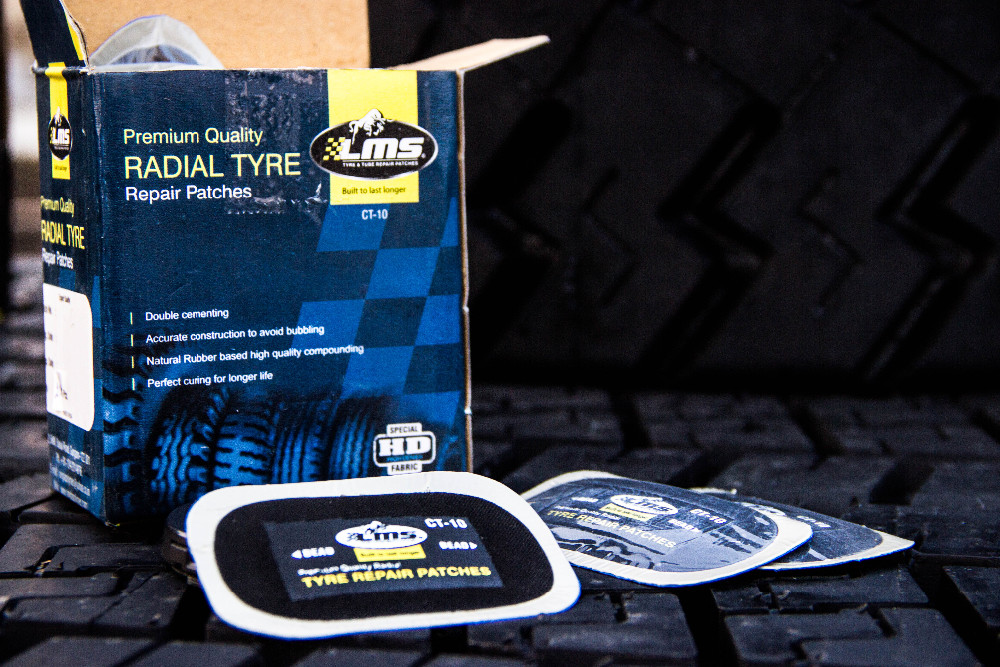
The precise location of the puncture is also a deciding factor. The rules stipulate that tire repairs must stay within the central three-quarters of the tread, known as the “minor repair area.”
Moreover, if the size of the puncture is more than or equal to 6 mm in diameter, a repair isn’t permitted at all. Drivers have no other alternative than to invest in a brand-new tire.
In a word, no. More specifically, a puncture that falls outside the minor repair area is not eligible for fixing because of its proximity to the sidewall.
The sidewall is off limits for a straightforward reason. When the tire is in daily operation, this section undergoes a significant amount of stress. Any attempts at making repairs in this area will potentially weaken the structural integrity of the tire.
Another factor is that the sidewall experiences the most flex in the tire. It’s unlikely that a repair patch applied here will stay in place for very long, and the tire will fail once again.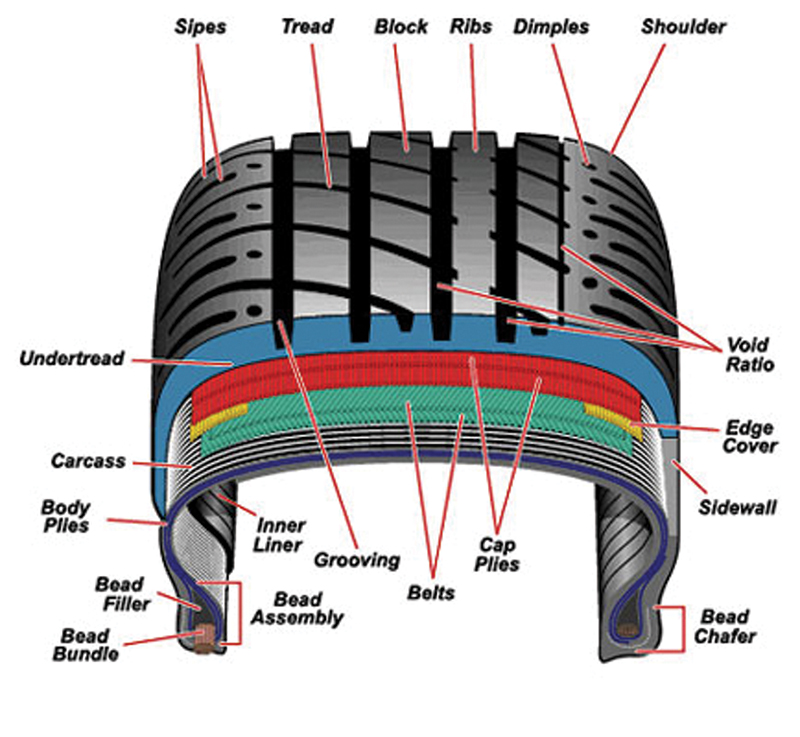
One more thing concerning the sidewall is that you should avoid driving any further on a flat tire if you hope to salvage it. Inflation pressure maintains the shape of the tire while driving; when that pressure is lost, the tire sidewall is going to be pinched between the wheel rim and the road, so continuing to drive will extend the damage beyond the minor repair area.
In other words, do not drive on a deflated tire while the puncture is within the minor repair area (and is therefore repairable). The tire sidewall could sustain additional damage that renders it beyond repair. The better course of action is to have the vehicle towed or swap the punctured tire out for the spare tire until you reach the nearest garage.
Dealer Locator
Technological instruction for tire repair using the cold vulcanization method
Technological instruction for tire repair using the cold vulcanization method contains complete information on how this repair is carried out.
The manual has an introduction which includes:
In addition, tire and tube repair instructions include:
First of all, let's consider the structure of a car tire. nine0003
Car tire design
All types of car tires are very similar in design. Modern tires also consist of a special rubber-cord shell, a toroidal chamber, and a rim tape.
In working condition, under a certain pressure, the chamber is filled with air. There are also tubeless tires that have a special sealing layer instead of a tube.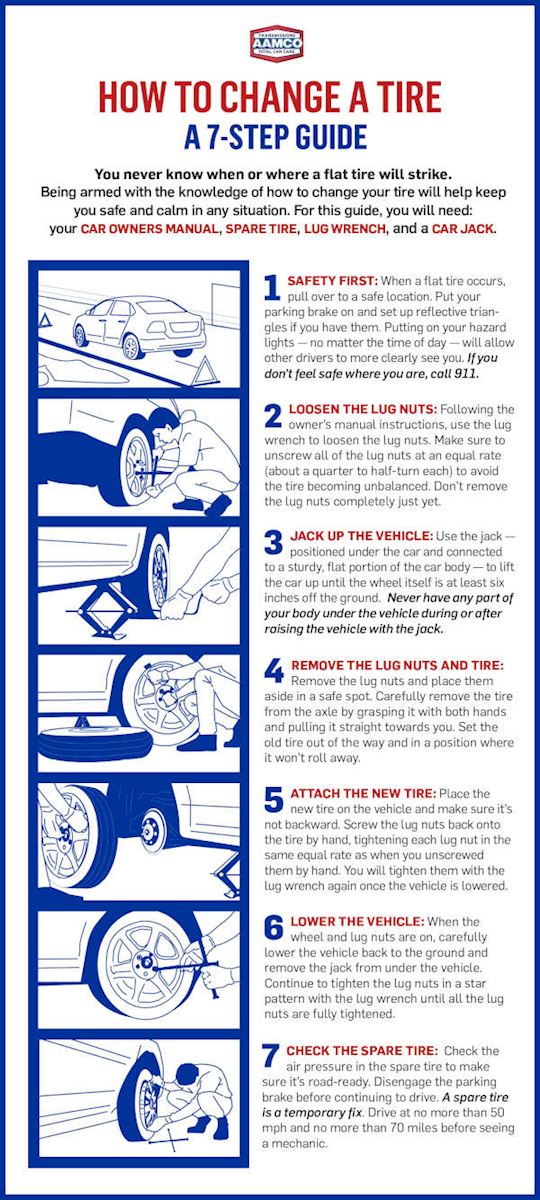 Usually, a car tire works in rather difficult conditions. And for this, it must be characterized by elasticity, wear resistance, and high strength. In addition, tires must resist tread wear very well, and be able to withstand very complex deformations. nine0003
Usually, a car tire works in rather difficult conditions. And for this, it must be characterized by elasticity, wear resistance, and high strength. In addition, tires must resist tread wear very well, and be able to withstand very complex deformations. nine0003
There are different types of tires in which the material and construction are quite different. Passenger car tires are very different from tires that are designed for truck tires. Such tires have an elastic carcass, a different tread pattern, lower height and diameters.
Bias tires are presented in the form of crossed cords, as a result of which they are located at a certain angle. Thanks to this direction, excellent distribution of all forces during tire deformation and excellent shock absorption strength are ensured. nine0003
The design of radial tires is that the cords are located radially along the profile of the tire from one bead to another, as a result of which each layer of the cord does its work independently.
Tire configuration is quite complex, it includes several elements. The main part is the carcass, which perceives the loads that act on the tire. The main load that can act on a tire is the weight of the car, as well as the weight of the passengers or cargo that is carried in the car. This element must be strong enough and elastic. nine0003
The shape and number of plies are determined by a calculation that takes into account the air pressure, the purpose of the tire and its type, and the load.
The air cavity in the tubed tire is created by the sealing chamber. It has a valve that pumps, holds and bleeds air.
In a tubeless tyre, the air cavity is created by the tire as well as the wheel rim. With the help of a sealing layer of rubber, which is applied to the inner surface of the tire, excellent sealing is achieved. nine0003
Any tire has a special designation that shows its dimensions. In most cases, these dimensions are indicated on the side of the tires, and are indicated by two parameters.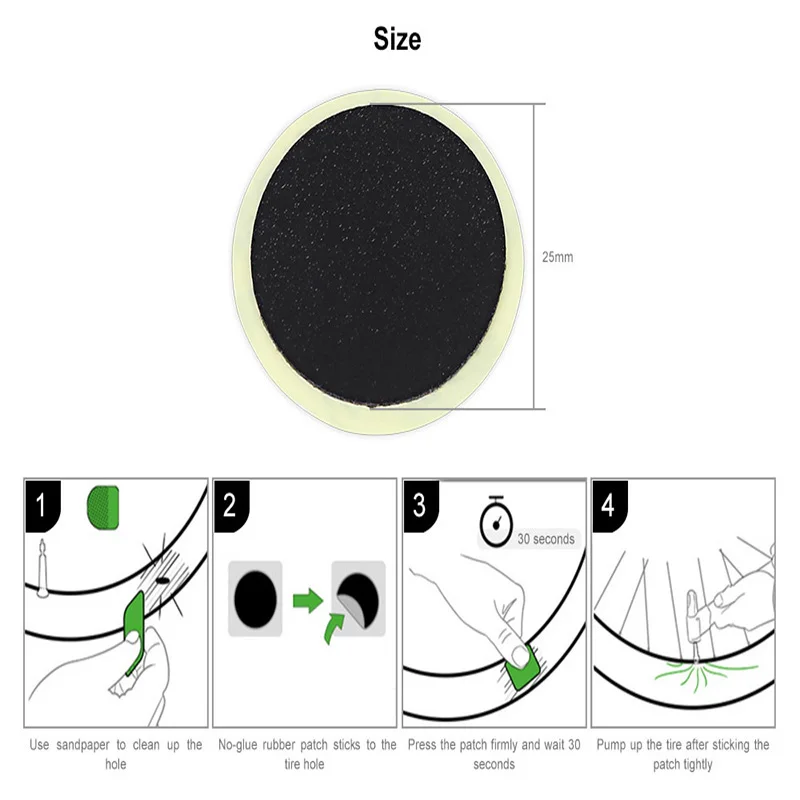
Car tire marking
These parameters are:
For radial tyres, the second number is followed by an "R".
It should be noted that usually there is such a marking on the tire:
Different materials are used to make tires. Tubeless and tube tires are made of rubber, metal cord, wire or cord technical fabric. In most cases, tires are made of rubber, which is based on synthetic rubber. Chambers are also made of rubber, and rim tapes are made on the basis of reclaimed car tires. nine0003
The production of tubes and tires consists of many different processes.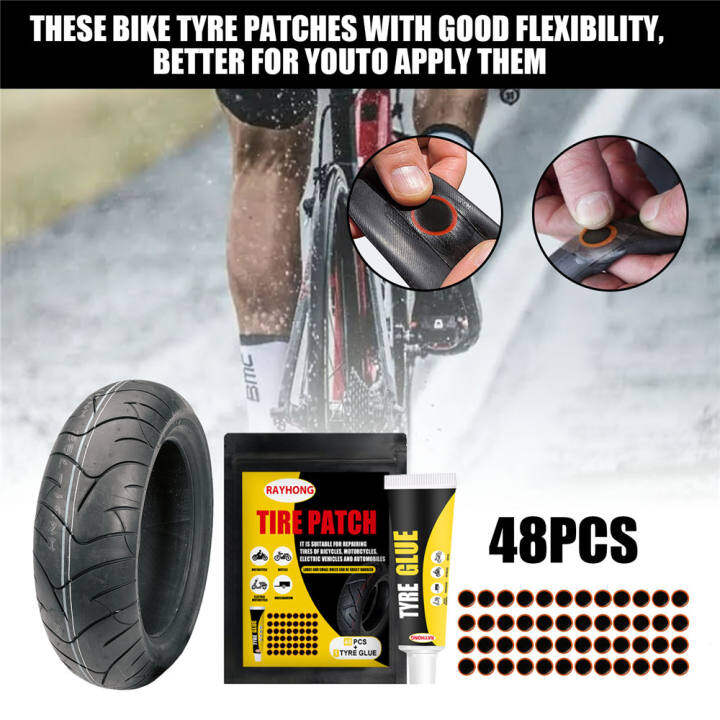 Tire manufacturing is the most difficult of these moments. First of all, rubber, rubber compounds, treads, fenders and other parts that are necessary for assembling and forming a tire are prepared.
Tire manufacturing is the most difficult of these moments. First of all, rubber, rubber compounds, treads, fenders and other parts that are necessary for assembling and forming a tire are prepared.
Repairing tires with special cold vulcanizing patches is a rather complicated process.
When repairing radial tires, visually inspect them. If you see some damage in the marked area, such a tire cannot be repaired. After inspection, carefully cut out the damaged rubber with a knife. After that, with the help of wire cutters, you can remove the damaged cord wire. Safety goggles must be worn when performing such work. nine0003
Before you work on the tire, dry it thoroughly in a drying chamber. The ends of all cracks that exist should be made round using a special sharpened tube.
Damage to a car tire
Use a cut-off wheel to cut off the funnel of damage, and only then work the rubber with a roughening ring. The surface of the rubber you have processed should not be smooth.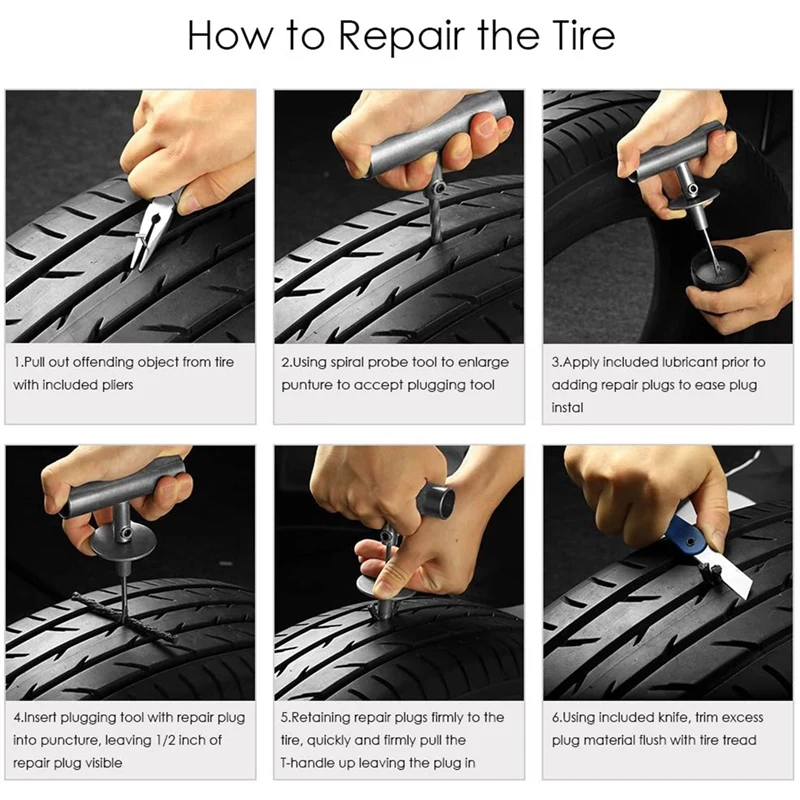
The rubber must not burn during the processing. Then the surface of the place where there was damage should be treated with a wire brush on the outside, as well as inside the tire. nine0003
Use a vacuum cleaner to remove all dust and crumb rubber. In this case, never use cleaning that is carried out with oil or moisture.
Now measure the exact size of your injury, choose a special patch, and mark its number on the tire with chalk.
Next, thoroughly mix the thermal solution, and apply it to the surface of the tire funnel. Let the tire dry for one hour. To test for dryness, you can test the back side with your finger, as a result there should be no sticking. After the first layer is dry, you can confidently apply a second layer of mortar, which will dry for 15 minutes. nine0003
To fill the damage funnel, cut strips of raw rubber, the width of which should be 10-15 minutes, then heat them on a special stove. An extruder can be used to speed up this process.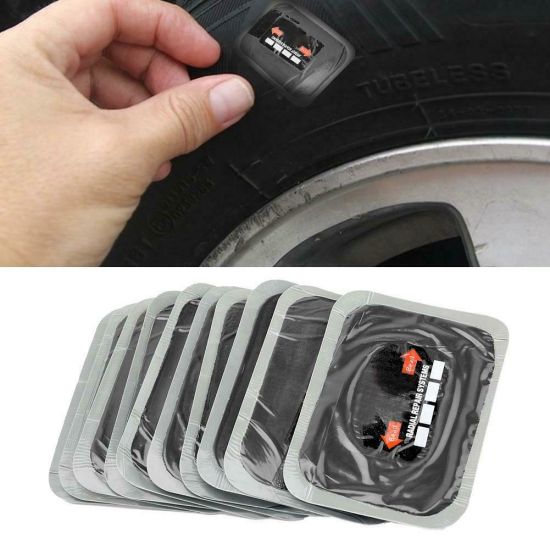
Fill the funnels with heated rubber, and cover the funnel with wet rubber pads, then roll them in with a toothed roller. All irregularities should be trimmed with a knife, but the wet rubber level should be greater than the overall surface level. nine0003
Tire repair
Special lines ensure that the vulcanizer heater is centered on the area you are repairing.
Now we treat the surface of the funnel with Thermal Mortar and cover it with heat-resistant foil from the outside, as well as inside the tire.
After that, start curing, which consists of:
Before you begin to install the patch, carefully check the quality of the rubber at the place of repair. To do this, remove the layer of welded rubber, and if you see a lot of air bubbles, you need to vulcanize again.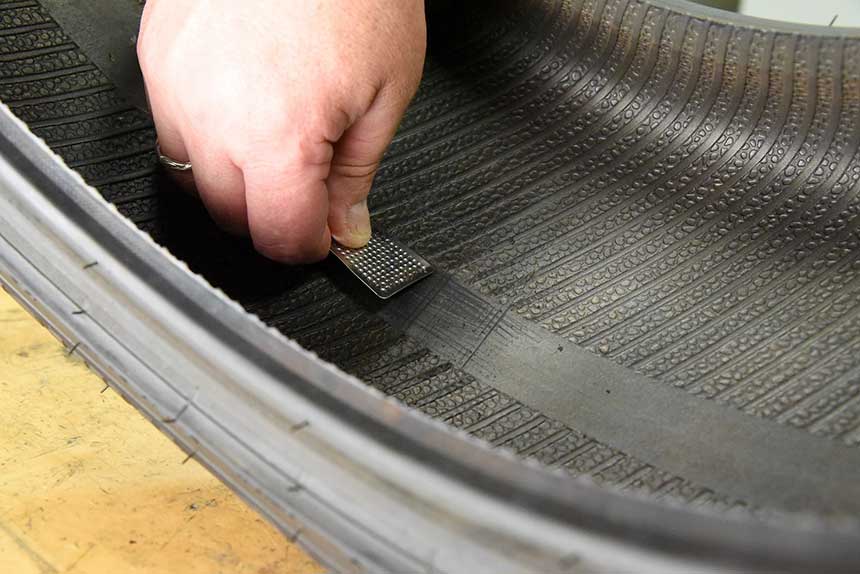
To install the patch, guide lines should be made to help center the patch on the repair site. Install the patch on the inside of the tire at the repair site so that the special lines on the tire and also on the patch are completely aligned. nine0003
Work the inside of the tire with a wire brush and position it so that the area you repaired is on the side. The tire should dry for 15 minutes.
Bias repair also has its own characteristics.
First of all, cut out the funnel-shaped defects at the repair site so that all layers of cord are removed. After that, dry the tire with a dryer.
Treat all damage with Liquid Buffer Cleaner and remove debris. Now round the cracks with a special sharpened tube. The surface must be rough. Vulcanization must be carried out using the Minimaster vulcanizer. nine0003
After the tire has completely cooled down, you can start installing the patch.
See also: 5 best manufacturers of car wiper blades according to the REMONTO5.RU project Author:
Ravil Salikhov
COMMENTS: (0)
* When taking tires for repair, carefully check their general condition. Explore all tires for hidden defects. Particular attention must be paid on the condition of the boards. nine0003
* To achieve a quality repair the following conditions are required: - organized in accordance with sanitary standards and workflow process places; - appropriate lighting sanitary standards; - past training and certification of personnel; - all materials must be recommended for use by the company “Thermopress” and tested for compliance with the warranty term. - storage of materials and equipment must be carried out with compliance with the relevant requirements, set out in the accompanying instructions and accompanying documents. nine0003
nine0003
* The manufacturer reserves the right to any changes for the purpose of technical improvements.
* When choosing plasters, tools and equipment, use valid tables and instructions.
Attention: For car repair tires by hot vulcanization should use special thermocouples with black adhesive layer and index "t°" in designation.
Safety note:
* When working with tools, observe the requirements of the relevant regulations for safety, where it is necessary, use protective equipment such as safety goggles, gloves, respirators, etc.
* When handling solutions, observe safety measures indicated on the labels, exhaust ventilation is required.
* Operate only on serviceable equipment, use the correct tool.
For car tire repair hot vulcanization recommended use vulcanizers "Complex""
Solutions listed in this manual can be supplied in packaging other than from that listed in the catalog.
This manual introduces repair work that is carried out on the sidewall. Running track and tire shoulder are being repaired similarly.
1. When taking tires for repair, carefully check their general condition. Explore all tires for hidden defects. Pre-determine maintainability tires, for this measure the dimensions damage, and according to the table previously select patch number. nine0003
Measure the distance from the edge of the damage to the edge of the tire bead. The size must be greater than or equal to the value specified in the patch selection table.
If the damage exceeds allowable standards, then repair the tire it is forbidden.
2. The tire must be be dried thoroughly. Tire drying it is recommended to produce in a dry heated room. To speed up allowed to dry the damaged area a lamp or a jet of heated air using a fan heater (art. no. 05 010), while heating must not be allowed rubber above 80 ° C.
Wear safety goggles!
3.![]() Treat the damaged area with inside and outside cleaner Liquid Buffer and use a scraper to remove pollution.
Treat the damaged area with inside and outside cleaner Liquid Buffer and use a scraper to remove pollution.
4. Cut out the damaged rubber with a knife or cap cutter (art. no. 04 008…04 0012). Remove damaged cord ends (Fig. 2). When repairing a treadmill remove loose, damaged or rusty breaker wire with wire cutters.
5. Round off the ends of the cracks with sharp pin rougher (art. no. 04 110) or a specially sharpened tube. nine0003
6. Treat the damage funnel in steel cord zone with a cut-off disc (art. no. 04 420) (fig. 3) or grinding cone (art. no. 04 400) and then process rubber surface with a rougher rings (art. no. 04 160) so that cup-shaped funnel (fig. 4)
ATTENTION! Finished rubber surface should be rough (by no means smooth). During processing, do not burn rubber, for this final roughening perform at low tool speeds (up to 750 rpm)
7. Properly Prepared Funnel damage (Fig. 5).
ATTENTION! Do not contaminate the stripped surface and do not treat with cleaner Liquid Buffer.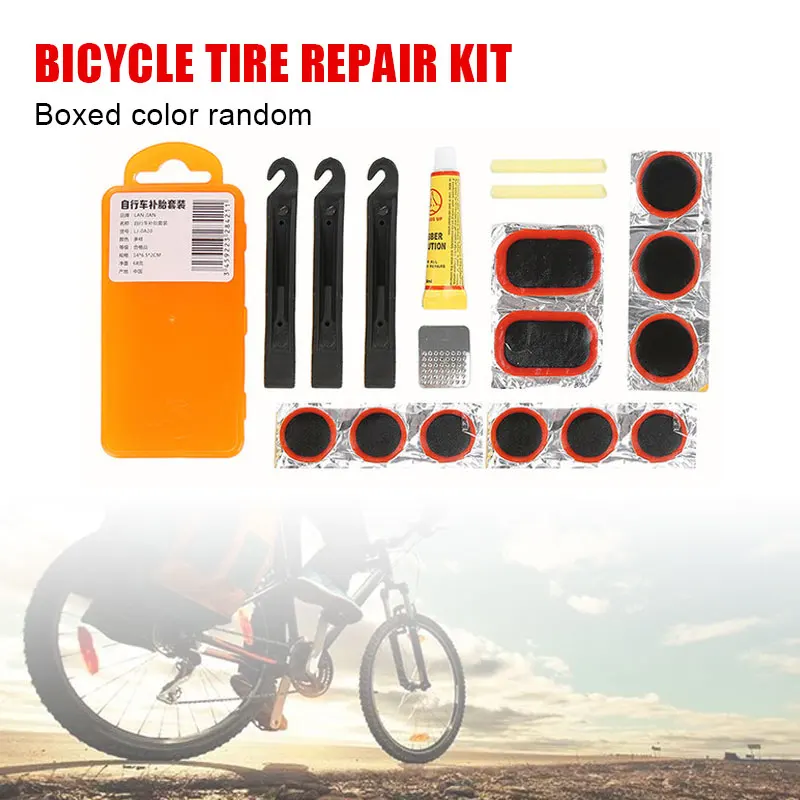 Do not allow intermediate storage to avoid contamination and surface oxidation.
Do not allow intermediate storage to avoid contamination and surface oxidation.
8. Measure the size of the damage. At repairing bias tires find the number PR (number of cord plies) indicated on tire side wall. Choose the one you want patch in accordance with current tables and mark the patch number on chalk tire. To calculate the time vulcanization measure the maximum wall thickness at the site of damage and make a mark on the surface of the tire. nine0003
9. For the correct installation of the thermal patch swipe on the inside of the tire in the center of the place of repair auxiliary lines in radial and axial directions (Fig. 6). When repairing the sidewall of the diagonal tires must use special side patches with the index “B”, which allow you to install them closer to the edge sides. For ease of use, spread tire bead with bead expander (art. no. 06 003).
10. Apply in the center of each side patch auxiliary lines (Fig. 7). nine0003
11. Install the thermal patch (arrow in the direction of the edge of the bead) to the inner side of the tire at the point of damage so that so that the auxiliary lines on the bus and patch matched. Circle the thermal patch along the contour with an allowance of 5-10 mm
Circle the thermal patch along the contour with an allowance of 5-10 mm
12. Cases of damage. Sketches 8 a, b, c show the installation of a thermal patch on the principle of alignment of the center of damage and the center of the thermal patch. Sketch 8 g shows the possibility of repair damage near unrepairable zones, while the center of damage is not coincides with the center of the thermal patch. AT In this case, the edge of the patch should overlap as close to the edge as possible sides. nine0003
13. On the inner surface of the tire in repair site must be carefully Apply Liquid Buffer Cleaner to area larger than the selected thermal patch, carefully remove dirt with a scraper (art. no. 04 022). At the same time, avoid getting Liquid Buffer on the treated surface funnels (see warning to item 7).
Rotate the tire so that the repair turned sideways, and give dry for 10-15 minutes.
14. Process the tire inside the marked plot (Fig.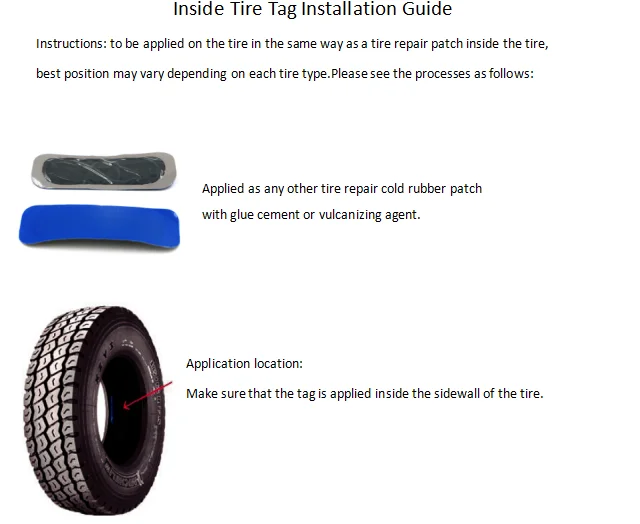 9) using contour circle (art. no. 04 300) or round metal brushes (art. no. 04 340). When repairing tubeless tires must be completely removed loose sealed layer to a layer of dense rubber.
9) using contour circle (art. no. 04 300) or round metal brushes (art. no. 04 340). When repairing tubeless tires must be completely removed loose sealed layer to a layer of dense rubber.
ATTENTION! Processing very carefully so as not to damage cord threads.
15. Remove dust and crumb rubber inside and outside the tire at the point of repair using sweeping brush or vacuum cleaner (Fig. 10).
Do not clean with compressed air containing oil or moisture. nine0008
16. Check the quality of the rubber layer on treated area. Completely remove soft, rolling when peeled off rubber particles.
ATTENTION! Finished rubber surface should be rough (by no means smooth). During processing, do not burn rubber, for this final roughening perform at low tool speeds (up to 750 rpm) with a wire brush (art. No. 04 340).
17. Apply evenly to the prepared for installing thermal plaster surface tires first layer of thermal solution (art.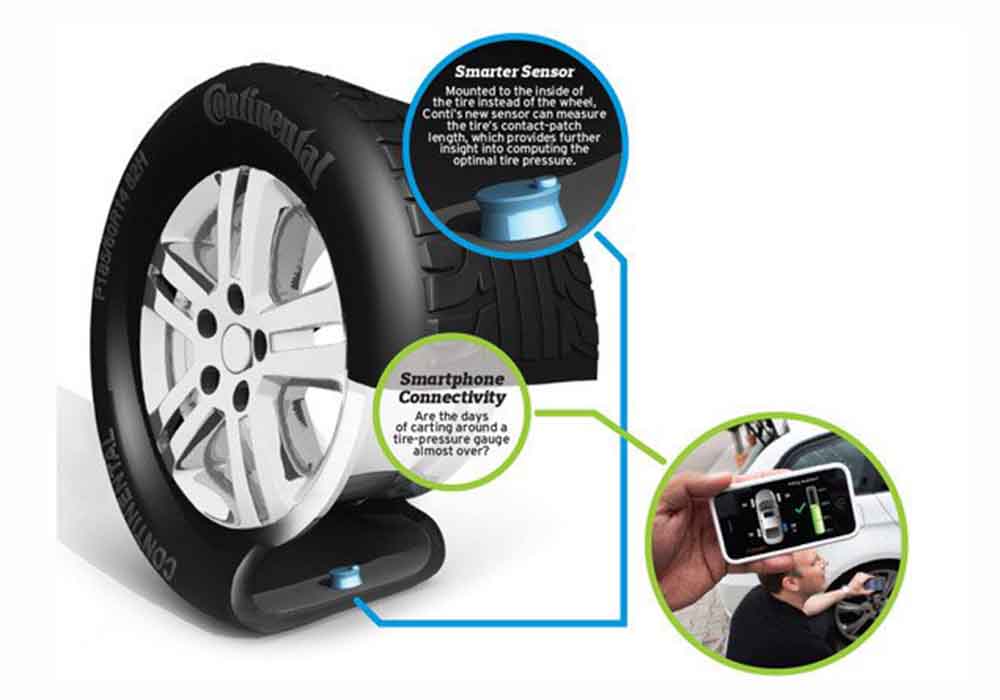 no. 10 600). Drying time - 60 minutes (rear side of the finger - sticking should not to be).
no. 10 600). Drying time - 60 minutes (rear side of the finger - sticking should not to be).
18. After the first coat has dried thermal solution on the surface of the tire apply a second layer. Drying time of the second layer 15-20 minutes (sample back side finger should feel light adhesion). For timing use timer (art. no. 11 001)
19. Remove the protective film from the side adhesive rubber from the middle approximately 5-7cm in both directions (protective film from the top side of the thermocouple must be left).
20. Remove the onboard expander. Patch with free middle zone apply to the place of repair, combining auxiliary lines on the patch and splint. Roll on middle of patch with roller
21. Remove both parts of the protective cover one by one. adhesive films. With and without effort roll the entire surface patch with a roller (art. no. 05 002). nine0003
22. When repairing tubeless tires, remote during roughening the sealed layer inside the tire around the thermal patch needs to be restored.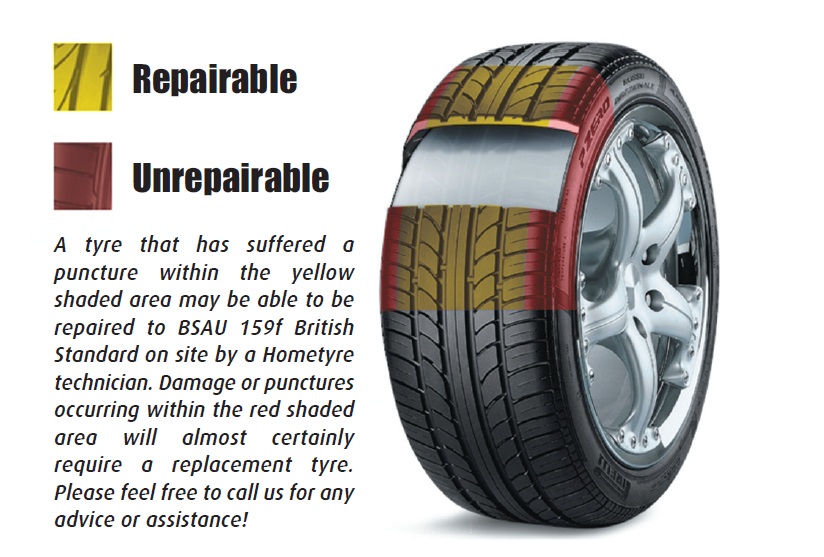 For this you need to cut strips of raw rubber (1 mm) and roll them with a roller around the perimeter plaster in such a way as to cover buffed tire surface around patch.
For this you need to cut strips of raw rubber (1 mm) and roll them with a roller around the perimeter plaster in such a way as to cover buffed tire surface around patch.
23. Coat the surface of the funnel with two thermal solution layer (art. no. 10 600). Time drying - 60 minutes (sample with the back side finger - sticking should not be). After the first layer has dried, apply second layer. Drying time of the second layer 15-20 minutes (test with the back of the finger you should feel a slight stickiness) (Fig. 12). To keep track of time, use timer. nine0003
ATTENTION! To reduce the time the first layer is allowed thermal solution simultaneously to the surface under the patch and on the damage funnel.
24. To fill the funnel damage tires cut strips of raw rubber (3mm) 10-15mm wide and heat them for special plate (art. no. 11 011) (Fig. 13).
25. Do a serial filling the funnel with strips of raw rubber (3mm), carefully rolling them to each other with the help of roller, preventing the formation of air bubbles (Fig. 14). nine0003
14). nine0003
26. Trim the bumps with a knife, while the level of crude rubber filling funnel, must exceed the overall level tire surface by at least 3 mm for tires L / A and 5 mm for tires G / A (Fig. 15).
27. Vulcanize the site repair with vulcanizers "Complex-1", "Complex-2" or "Complex-3" providing mode simultaneous vulcanization of the patch and funnel damage.
Follow instructions for the operation of vulcanizers! nine0008
Tire curing time at temperature vulcanization 140 ° C develops from: - 30 minutes to warm up heaters - 5 minutes each millimeter of tire thickness, taking into account the thickness patch. - when repairing tractor and all-terrain tires with a deep profile it is necessary to increase the curing time by 50%.
28. After the curing regimen the tire must cool down under pressure to t = 90°C.
29. Remove repaired tire from the vulcanizer. nine0003
30. After vulcanization check the quality of the repaired surface.